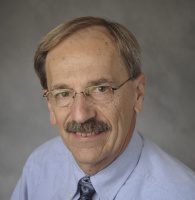Final Thoughts: Certainly Uncertain: Difficult for Engineers

Uncertainty. This is a word that engineers have a problem with, as we like to be able to predict what will happen. Nobody wants to design or construct a project for which we can’t predict the performance.
Sadly, uncertainty now is part of the future of our national infrastructure. More than a year ago, when the current president took office, I prepared to write about the new infrastructure program he had promised. I collected some data and statistics to help show the need for increased emphasis on our infrastructure. I updated those statistics a few times over the months in anticipation of the rollout of the proposed bill. I even started a paragraph or two.
It’s now more than 500 days since that transition, and this is what we know about the proposed infrastructure program:
You get my point. Inaction by this administration and Congress has allowed another year of continued deterioration and lack of significant investment in our infrastructure. I had an opportunity to read a preview of the column by Anthony Casciano in this issue, where he says “infrastructure is a national priority” and points out some options for funding that investment. I agree with Mr. Casciano that it must be a priority—but much higher than it has been in the recent past. There doesn’t appear to be any significant movement on a bill—probably because our “leaders” are more concerned with getting re-elected than anything else.
So, I will put away the statistics until sometime in the future and update once again when the administration finally makes up its mind to update our infrastructure.
Navigating Uncertainty
Uncertainty in the path of infrastructure improvements doesn’t sit well with engineers. Not only because we know the cost of a D+ infrastructure, but it also causes unpredictability in our workload and career paths. Even when my engineering career seemed stable and straightforward, it took some unpredictable turns.
When I first began my profession, I thought I’d work for the state highway department until I became registered as a professional engineer; then I would work for a private engineering firm for the rest of my career, designing and building public-works projects. I wanted to work on projects that served the general public. This was a fairly straight course for my career path.
For a while, this plan was working. I worked the four years that was required as experience in my field, and I took the P.E. examination. I passed and began thinking about my next step. But then the highway department gave me a promotion and some more money and vacation time, so I stayed. I watched some of my colleagues move to local firms, and there didn’t seem to be the advantages I was looking for. So I settled in … for 17 years!
When my family and I decided to move, it wasn’t because of a career change—it was mostly environmental. We were tired of Midwest winters, and I accepted a position with a large company in Florida.
Although a company of more than 4,000 employees, it was privately owned, and it didn’t feel that large. Each office was responsible for its business and received support when needed. Everything seemed OK in my career path, so I settled in again.
I didn’t think a company that size could be bought by an even larger company, but it was. I stayed for a while, but there were a lot more requirements that, in my opinion, didn’t add value. So I moved to another smaller firm and settled in again. Alas, this firm was later acquired by the same large firm.
Stay Open
My plan for my career wasn’t nearly as predictable or certain as I thought. As I near the end of my career, I have moved again to a smaller firm, with a focus of serving the greater community and mentoring younger engineers; and settling in for the last time.
Many of us who have been in the engineering profession for 40-plus years have experienced unpredictability in the direction our jobs have taken us. It’s not in our nature to be uncertain, but uncertainty in a career path provides a variety of opportunities and experiences that allow for personal growth and a wider worldview that’s invaluable. So be ready for uncertainty in your professional career, but don’t allow uncertainty in your projects. I’m afraid I can’t help you with politics …
About Robert Schickel
Robert Schickel was born in New Jersey and received his BS in Civil Engineering degree in 1971 from Valparaiso University in Indiana. His career started as a bridge design engineer and expanded to include design of various transportation facilities, including highways, bridges, rail lines and stations, and airport runways. Mr. Schickel managed engineering offices ranging from 20 to 140 people. He also served as a consultant to a large utility company. Mr. Schickel currently resides in Indiana and serves as Adjunct Professor for the College of Engineering at Valparaiso University. He enjoys his retired life at his lake house, playing golf, listening to music and spending time with his family, especially his grandchildren.


